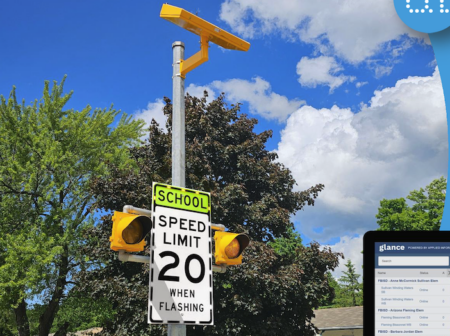Highways England (HE) has demonstrated its pioneering work on C-ITS (connected – intelligent transportation systems) to an international audience as part of the pan-European InterCor (Interoperable Corridors) project.
HE has showcased innovative technology that it hopes will transform journeys on the country’s busiest routes by enabling vehicles and the roads to ‘talk’ to each other. A high-tech ‘connected corridor’ is being created on the A2/M2 in Kent to let specially equipped vehicles interact with roadside infrastructure (V2I) in a move that promises safer, more reliable journeys and speedier maintenance, to help reduce delays on the heavily-traveled route.
HE, the UK Department for Transport (DfT), Kent county council (KCC), and Transport for London (TfL) are all working together on this part of the InterCor project, and have staged a ‘TESTFEST’ showcasing progress to date to their European partners. InterCor is an EU project that aims to test services that work across borders, connecting the UK to the Netherlands, France and Belgium. The project started in 2016 and is due to be completed in 2019.
The week-long event also attracted more than 60 people from the automobile world to allow them to understand the technology and see how it could be used in the construction of future vehicle designs. The project on sections of the A2 and M2 is testing how information about road conditions, roadworks and time left for traffic lights to change to green can be transmitted to test vehicles via a wireless network. Providing drivers and fleet managers with the information and tools to make real-time decisions has the potential to quickly improve traffic flow along the corridor. It also has the potential to improve safety by providing more information about traffic conditions ahead.
Displaying the information on screens inside vehicles reduces the likelihood of drivers missing information displayed on roadside signs, ending the problem of obscured signs caused by vegetation or when passing other vehicles. For example, a sign may appear for a lane closure in place because of an accident or debris ahead. Keeping the lane clear gives the emergency services the access they need to help. Providing this information in a vehicle will help reduce drivers accidently driving in a closed lane, improving safety for everyone.
“Connecting vehicles to each other and the road around can improve journeys, make them safer and give drivers reliable, real-time personalized information; it could also help us manage traffic and respond to incidents,” explained Jo White, head of HE’s Intelligent Transport Systems Group.
“We’re supporting the government’s aim to be world leading in the development of connected and autonomous vehicles (CAVs). The TESTFEST is a vital part of that, because it means the initiatives we take forward and the vehicles being developed all align so drivers continue to have safe journeys in the future.”
KCC’s cabinet member for highways, Mike Whiting, added, “We welcome this investment and look forward to finding out the results from this pilot scheme. The A2 and M2 are some of the busiest roads managed by Highways England in Kent, so we are keen to find out whether this new technology can reduce delays.”




